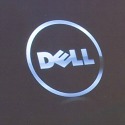Dell Technologies unveiled a range of new edge computing products for telco operators, a move that could pit Dell against against Nokia, Ericsson and others that sell edge computing hardware.

Dell Technologies today released a handful of new products specifically targeted at edge computing operations in the telecom industry.
"We think the edge is an opportunity," Dell Technologies' Kevin Shatzkamer told Light Reading.
Dell announced a new server (PowerEdge XE2420), a new mini data center module (Modular Data Center Micro 415), new controller software (iDRAC9) and a new ingestion and analysis offering (Streaming Data Platform) that are all designed to allow service providers to quickly and easily build edge computing operations.
Dell's Shatzkamer explained that the company decided to target the telco space roughly three years ago. He said the company saw an opportunity there as operators moved their network operations from dedicated hardware to virtualized, software-powered systems that could work on off-the-shelf hardware. He said the first phase of the company's efforts involved working with telecom suppliers like Nokia and Ericsosn, but is now evolving to include direct sales of Dell hardware and software to telecom operators directly.
Dell already highlights Orange and AT&T as telecom operator "partners."
Shatzkamer admitted that, with its new products, Dell would compete directly with companies that also sell edge computing hardware, including Nokia, Erisson and others.
Edge computing gets crowded
That Dell is working to cash in on the edge computing trend is notable. Operators ranging from AT&T to Verizon to Telefonica have talked up edge computing as a way to dramatically increase the speeds and the types of services they can offer customers by moving computing resources physically closer to end users. Doing so eliminates the need to transmit data back to a centralized computing facility, and reduces the "latency" in a network connection.
Edge computing designs in wireless networks could potentially support a wide range of new services such as real-time, streaming virtual reality for video gamers or super-fast, low-latency factory operations for manufacturing companies.
Dell joins a wide range of established players such as Ericsson and Amazon and a growing number of startups like Vapor IO in targeting the edge computing sector.
— Mike Dano, Editorial Director, 5G & Mobile Strategies, Light Reading | @mikeddano
About the Author(s)
You May Also Like










